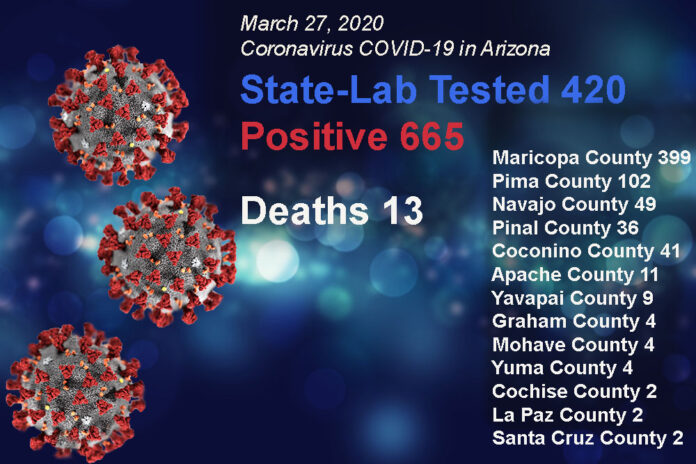
The novel coronavirus COVID-19 was first announced in Wuhan, Hubei Province, China, in December. Its symptoms are similar to common influenza but its fatality rate is higher.
According to the Center for Disease Control and Prevention, older adults and people who have severe underlying medical conditions like heart or lung disease or diabetes seem to be at higher risk for developing more serious complications from COVID-19 illness.
Reported illnesses have ranged from mild symptoms to severe illness and death.
SYMPTOMS
These symptoms may appear two to 14 days after exposure (based on the incubation period of MERS-CoV viruses).
__Fever
__Cough
__Shortness of breath
Those with those symptoms should self-isolate. When they develop “emergency warning signs” for COVID-19, they should get medical attention immediately. Emergency warning signs include:
__Trouble breathing
__Persistent pain or pressure in the chest
__New confusion or inability to arouse
__Bluish lips or face
HOW IT SPREADS
There is currently no vaccine to prevent COVID-19.
The best way to prevent illness is to avoid being exposed to this virus.
The virus is thought to spread mainly from person-to-person
__Between people who are in close contact with one another (within about 6 feet).
__Through respiratory droplets produced when an infected person coughs or sneezes. These droplets can land in the mouths or noses of people who are nearby or possibly be inhaled into the lungs.
PROTECT YOURSELF
Wash your hands often with soap and water for at least 20 seconds especially after you have been in a public place, or after blowing your nose, coughing, or sneezing.
If soap and water are not readily available, use a hand sanitizer that contains at least 60% alcohol. Cover all surfaces of your hands and rub them together until they feel dry.
__Avoid touching your eyes, nose, and mouth with unwashed hands.
__Avoid close contact
__Avoid close contact with people who are sick
__Put distance between yourself and other people if COVID-19 is spreading in your community. This is especially important for people who are at higher risk of getting very sick.
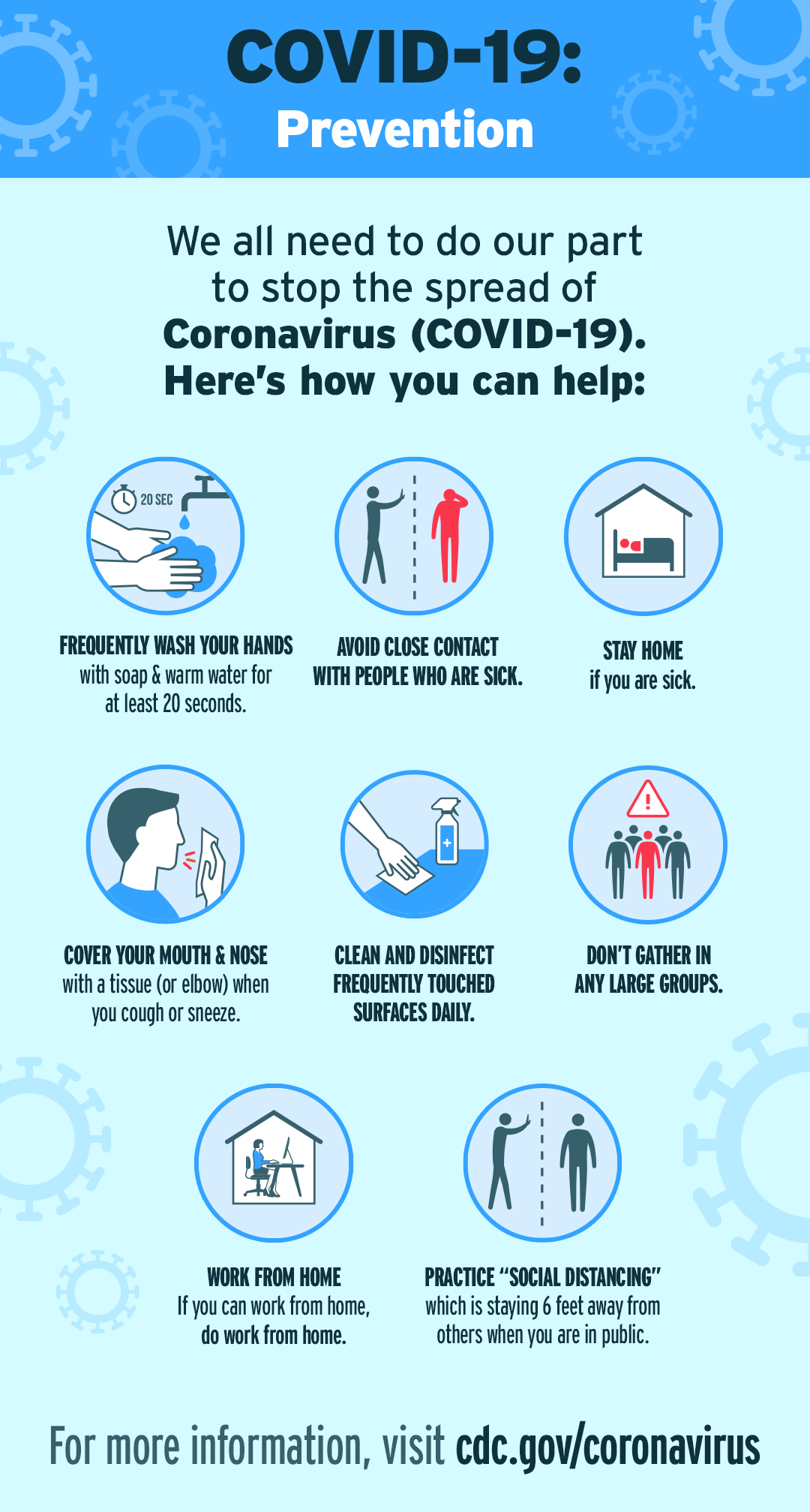
PROTECT OTHERS
__Stay home if you are sick
__Stay home if you are sick, except to get medical care. Learn what to do if you are sick.
__Cover coughs and sneezes
__Cover your mouth and nose with a tissue when you cough or sneeze or use the inside of your elbow.
__Throw used tissues in the trash.
__Immediately wash your hands with soap and water for at least 20 seconds. If soap and water are not readily available, clean your hands with a hand sanitizer that contains at least 60% alcohol.
__Wear a facemask if you are sick
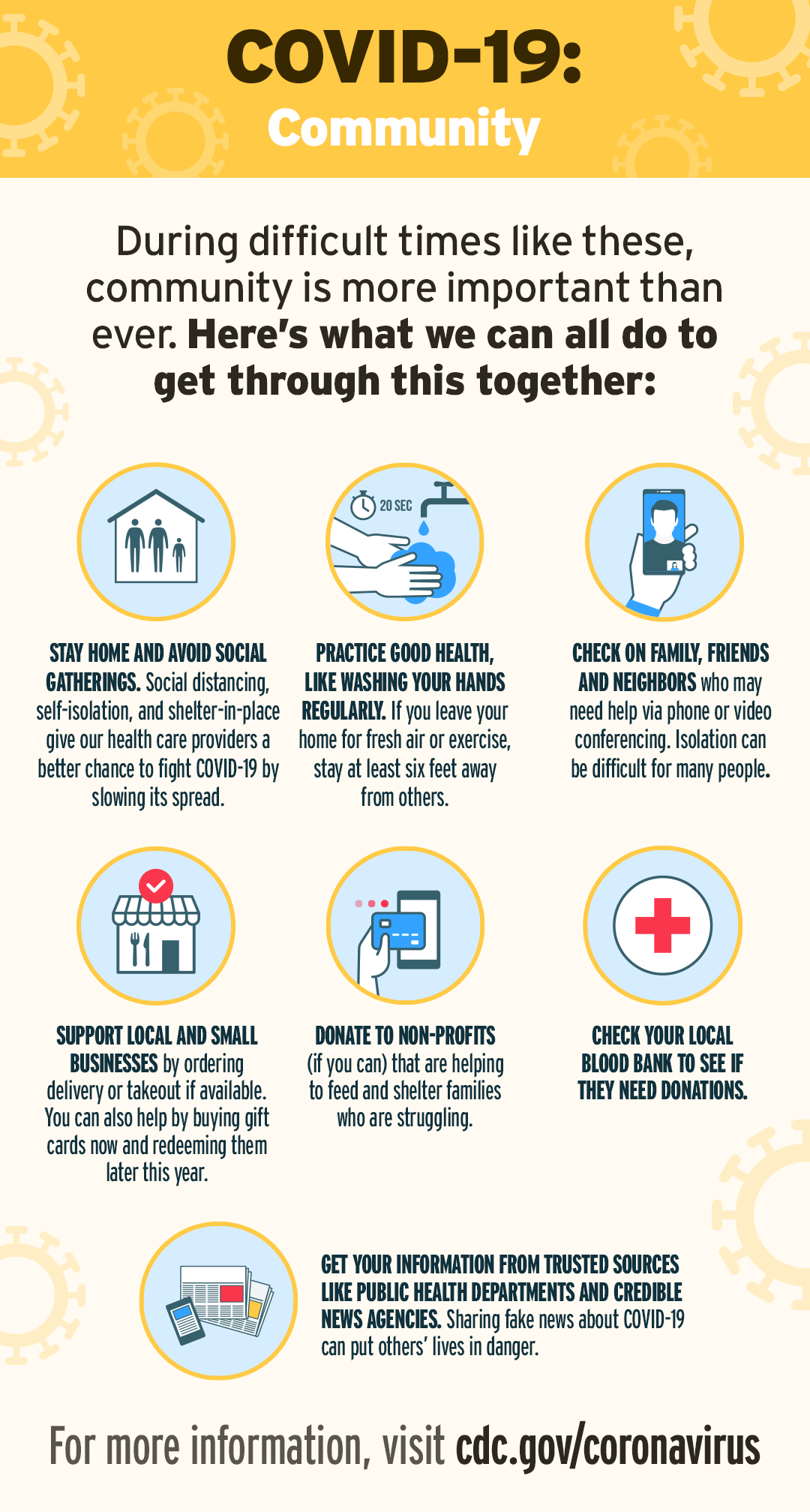
IF YOU ARE SICK
You should wear a facemask when you are around other people (e.g., sharing a room or vehicle) and before you enter a healthcare provider’s office. If you are not able to wear a facemask (for example, because it causes trouble breathing), then you should do your best to cover your coughs and sneezes, and people who are caring for you should wear a facemask if they enter your room. Learn what to do if you are sick.
Everyone is discouraged from creating “home remedies” or other solutions not prescribed by medical professionals. Patients have been scammed out of money for unnecessary and ineffective concoctions and others have even died.
If you are NOT sick: You do not need to wear a facemask unless you are caring for someone who is sick (and they are not able to wear a facemask). Facemasks may be in short supply and they should be saved for caregivers.
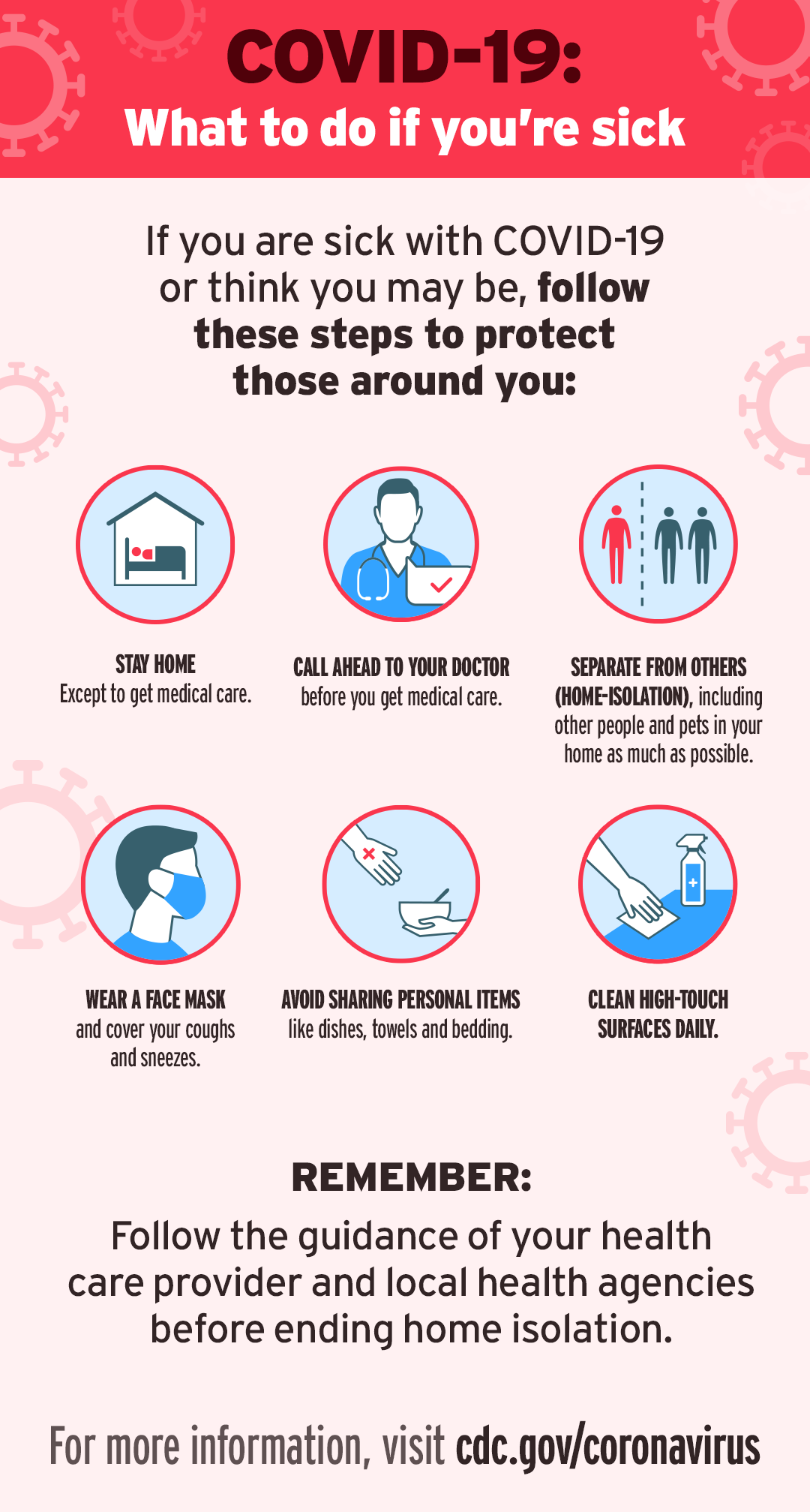
Clean and disinfect frequently touched surfaces daily. This includes tables, doorknobs, light switches, countertops, handles, desks, phones, keyboards, toilets, faucets, and sinks.
If surfaces are dirty, clean them: Use detergent or soap and water prior to disinfection.
To disinfect:
Most common EPA-registered household disinfectants will work. Use disinfectants appropriate for the surface.
Options include:
Diluting your household bleach.
To make a bleach solution, mix:
5 tablespoons (1/3 cup) bleach per gallon of water
OR
4 teaspoons bleach per quart of water
Follow manufacturer’s instructions for application and proper ventilation. Check to ensure the product is not past its expiration date. Never mix household bleach with ammonia or any other cleanser. Unexpired household bleach will be effective against coronaviruses when properly diluted.
Alcohol solutions:
Ensure solution has at least 70% alcohol.
Other common EPA-registered household disinfectants.
Products with EPA-approved emerging viral pathogens claims are expected to be effective against COVID-19 based on data for harder to kill viruses. Follow the manufacturer’s instructions for all cleaning and disinfection products (e.g., concentration, application method and contact time, etc.).

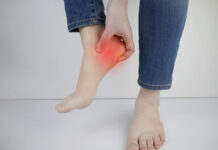





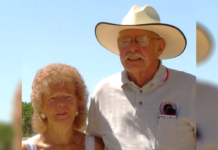
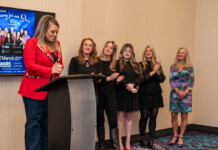



![Alleged car thief released without charges Phoenix police stop a stolen vehicle on April 20, 2024. [Facebook]](https://www.inmaricopa.com/wp-content/uploads/2024/04/IMG_5040-218x150.jpg)




